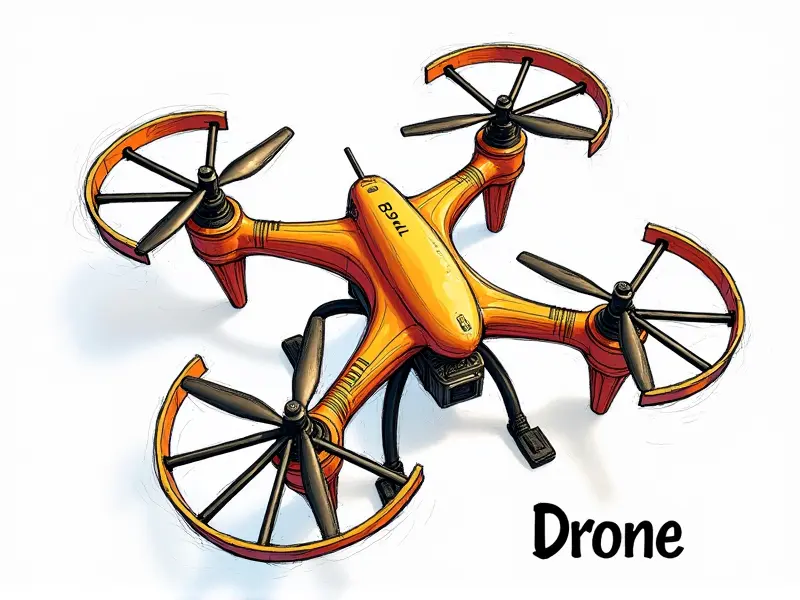RC helicopter frequency guide

Ultimate RC Helicopter Frequency Guide
Welcome to the ultimate guide on RC helicopter frequencies. Whether you're a seasoned pilot or just starting out, understanding and optimizing your radio control (RC) frequencies is crucial for smooth and interference-free flights. This comprehensive guide will walk you through everything you need to know about RC helicopter frequencies.
Avoid Interference: Best RC Helicopter Frequencies
Interference can be a major headache when flying RC helicopters, especially in crowded areas or during large events. To avoid interference and ensure optimal performance, it's essential to choose the right frequency band for your RC helicopter. The 2.4GHz band is highly recommended due to its wide range of available channels and lower susceptibility to interference compared to traditional 72MHz bands.
Maximize Your RC Helicopter with Correct Frequencies
Selecting the correct frequencies can significantly enhance your flying experience by reducing lag time, improving control responsiveness, and ensuring a stable connection between your transmitter and helicopter. Always check if your RC equipment supports multiple frequency options to maximize performance.
Optimal Frequencies for Smooth RC Helicopter Flight
To achieve smooth flight patterns and precise maneuvers, it's important to select frequencies that offer the best signal strength and stability. Optimal frequencies vary based on environmental conditions such as distance from obstacles, presence of other electronic devices, and weather conditions.
Understanding RC Helicopter Frequencies Simplified
Frequencies in RC helicopters are categorized into different bands: 72MHz, 40MHz, and the modern 2.4GHz band. Each band has its own advantages and limitations:
- 72MHz: Traditional frequency range with a limited number of channels.
- 40MHz: Less common but offers fewer interference issues compared to 72MHz.
- 2.4GHz: Modern and widely used, offering numerous channels and better resistance to interference.
Essential Tips for RC Helicopter Frequencies
To get the most out of your RC helicopter frequencies, follow these essential tips:
- Check Compatibility: Ensure that both your transmitter and receiver support the desired frequency band.
- Avoid Crowded Areas: Choose less crowded locations to minimize interference from other devices.
- Use Quality Equipment: Invest in high-quality transmitters and receivers for better signal strength and reliability.
RC Helicopter Frequency Settings Demystified
Frequency settings can seem daunting at first, but they are crucial for optimal performance. Here’s a breakdown of common frequency settings:
- Channel Selection: Choose an open channel within your supported band.
- Bind and Sync: Ensure that the transmitter and receiver are properly synchronized to establish a stable connection.
Beginner's Guide to RC Helicopter Channels
If you're new to RC helicopters, understanding channels is fundamental. Each channel represents a unique frequency within your chosen band. For example, in the 2.4GHz band, there are typically over 100 available channels.
Avoiding Interference with Perfect RC Frequencies
To avoid interference and ensure smooth operation:
- Use Frequency Meters: These devices help identify open frequencies in your area.
- Check Local Regulations: Some areas have restrictions on certain frequency bands, so always check local regulations before flying.
Mastering RC Helicopter Frequencies
Mastery of RC helicopter frequencies comes with practice and experience. Experiment with different settings in various environments to find the best configuration for your specific needs.
Understanding RC Helicopter Radio Bands
The radio bands used by RC helicopters include:
- 72MHz: Traditional band with limited channels, prone to interference from other devices.
- 40MHz: Less common but offers fewer interference issues compared to 72MHz.
- 2.4GHz: Modern and widely used, offering numerous channels and better resistance to interference.
In conclusion, mastering RC helicopter frequencies is key to achieving smooth, reliable flights. By understanding the different frequency bands, selecting optimal settings, and avoiding common pitfalls like interference, you can enhance your flying experience significantly. Whether you're a beginner or an experienced pilot, this guide provides valuable insights into optimizing your RC helicopter's performance.

